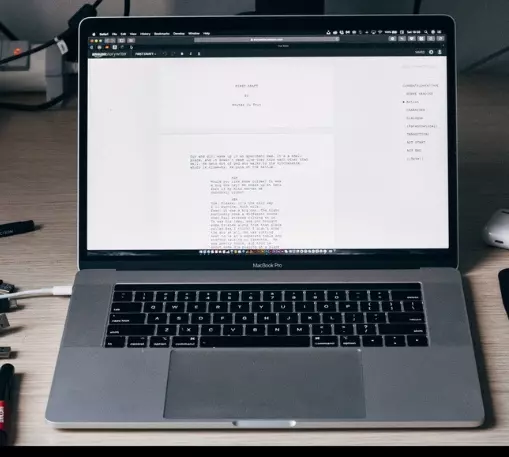The video essay has become an increasingly popular way of presenting ideas and concepts in the age of the internet and YouTube. In this guide, we present a step-by-step guide on how to write a video essay and tips on how to make it.
While it is easy to write a normal essay, the structure of the video essay is a bit of a mystery, owing to the newness of the term.
However, in this article, we are going to define what is a video essay, how to write a video essay, and also How to present a video essay well in class.
What is a Video Essay?
A video essay is a video that delves into a certain subject, concept, person, or thesis. Video essays are difficult to characterize because they are a relatively new form, yet they are recognized regardless. Simply, video essays are visual compilations that try to persuade, educate, or criticize.

These days, there are many creatives making video essays on topics like politics, music, movies, and pop culture.
With these, essays have become increasingly popular in the era of video media such as Youtube, Vimeo, and others.
Video essays, like photo and traditional essays, tell a story or make a point.
The distinction is that video essays provide information through visuals.
When creating a video essay, you can incorporate video, images, text, music, and/or narration to make it dynamic and successful.
When you consider it, many music videos are actually video essays.
Since making videos for YouTube and other video sites has grown so popular, many professors are now assigning video essays instead of regular essays to their students. So the question is, how do you write a video essay script?
Steps on How to Write a Video Essay Script
Unscripted videos cost time, effort, and are unpleasant to watch. The first thing you should do before making a video writes a script, even if it’s only a few lines long. Don’t be intimidated by the prospect of writing a script. All you need is a starting point.
A video script is important for anyone who wants to film a video with more confidence and clarity. They all contain comparable forms of information, such as who is speaking, what is said, where, and other important details.
While there are no precise criteria that a video essay must follow, it appears that most renowned video essayists are adhering to some steps as the form gets more popular and acknowledged online.
1. Write a Thesis
Because a video essayist can handle a wide range of themes, video analysis essays lack defined bounds. The majority of essays, on the other hand, begin with a thesis.
A thesis is a statement, claim, theme, or concept that the rest of the essay is built around. A thesis might be broad, including a variety of art forms. Other theses can be quite detailed.
A good essay will almost always have a point to express. Every video analysis essay should have a central idea, or thesis, that ties the film together.
2. Write a Summary
Starting with a brief allows you and your team to document the answers to the most pressing project concerns. It ensures that everyone participating in the video production is on the same page.
This will avoid problems of mixing ideas or getting stuck when you are almost completing the project.
3. Choose a Proper Environment and Appropriate Tools
When it comes to writing your script, use any tool you’re familiar with, such as pen and paper. Also, find a writing atmosphere that is relaxing for you, where you can concentrate and be creative.
Consider what you don’t have to express out loud when you’re writing. Visual elements will be used to communicate a large portion of your content.
4. Use a Template
When you don’t have to reinvent the process every time you sit down, you get speed and consistency.
It’s using your cumulative knowledge of what works and doing it over and over again. Don’t start with a blank page when I sit down to create a script- try to use an already made template.
5. Be Conversational
You want scripts that use language that is specific and targeted. Always avoid buzzwords, cliches, and generalizations. You want your audience to comprehend you clearly without rolling their eyes.
6. Be Narrative
Make careful to use a strong story structure when you’re trying to explain anything clearly. Ensure your script has a beginning, middle, and end, no matter how short it is. This will provide a familiar path for the viewers of your video script.
7. Edit Your Script
Make each word work for a certain position on the page when you choose your words.

They must serve a purpose.
After you’ve completed your first draft, go over your script and review it.
Then begin editing, reordering, and trimming. Remove as much as possible.
Consider cutting it if it isn’t helping you achieve your goal.
8. Read Your Script Loudly
Before recording or going on in your process, it’s recommended to read your script aloud at least once. Even if you won’t be the one reading it, this is a good method to ensure that your message is clear. It’s a good idea to be away from people so you may practice in peace.
Words that flow well on paper don’t always flow well when spoken aloud. You might need to make some adjustments based on how tough certain phrases are to pronounce- it’s a lot easier to change it now than when recording.
9. Get Feedback
Sometimes it is very difficult to point out your mistakes in any piece of writing. Therefore, if you want a perfect video essay script, it is advisable to seek feedback from people who are not involved in the project.
Keep in mind that many will try to tear your work apart and make you feel incompetent. However, it can also be an opportunity to make your video better.
The best way to gather feedback is to assemble a group of people and read your script to them. Watch their facial reaction and jot own comments as you read. Make sure not to defend your decisions. Only listen to comments and ask questions to clarify.
After gathering feedback, decide on what points to include in your video essay. Also, you can ask someone else to read it to you so that you can listen to its follow.
A video essay can be a good mode to present all types of essays, especially compare and contrast essays as you can visually contrast the two subjects of your content.
How to make a Good Video from your Essay Script
You can make a good video from your script if you ask yourself the following questions;

- What is the video’s purpose? What is the purpose of the video in the first place?
- Who is this video’s intended audience?
- What is the subject of our video? (The more precise you can be, the better.)
- What are the most important points to remember from the video?- What should viewers take away from it?
If the context had multiple characters, present their dialogues well in the essay to bring originality. If there is a need to involve another person, feel free to incorporate them.
How to Present a Video Essay Well in Class
- Write down keywords or main ideas in a notecard; do not write details- writing main ideas will help you remember your points when presenting. This helps you scan through your notecard for information.
- Practice- in presentations it is easy to tell who has practiced and who hasn’t. For your video essay to grab your class and professor’s attention, practice is the key. Practice in front of your friends and family asking for feedback and try to improve.
- Smile at your audience- this is one of the most important points when presenting anything in front of an audience. A smiley face draws the attention of the audience making them smile in return thus giving you confidence.
- Walk to your seat with a smile- try not to be disappointed even if you are not applauded. Be confident that you have aced your video presentation.
Other video presentations tips include;
- Making eye contact
- Be audible
- Have a good posture
- Do not argue with the audience
- Look at everyone around the room, not just one audience or one spot
- Rember to use your hand and facial expressions to make a point.

Joseph is a freelance journalist and a part-time writer with a particular interest in the gig economy. He writes about schooling, college life, and changing trends in education. When not writing, Joseph is hiking or playing chess.
